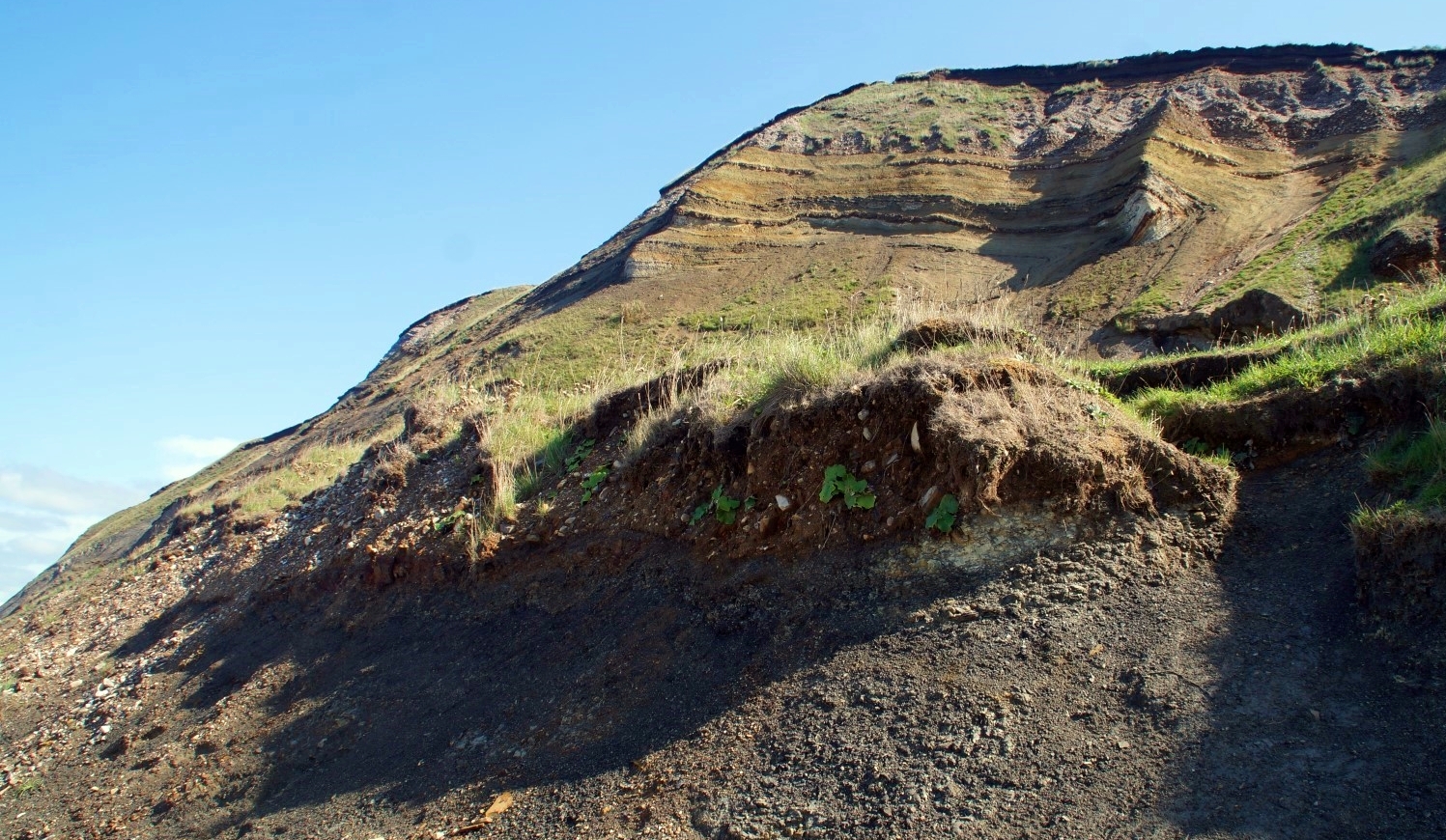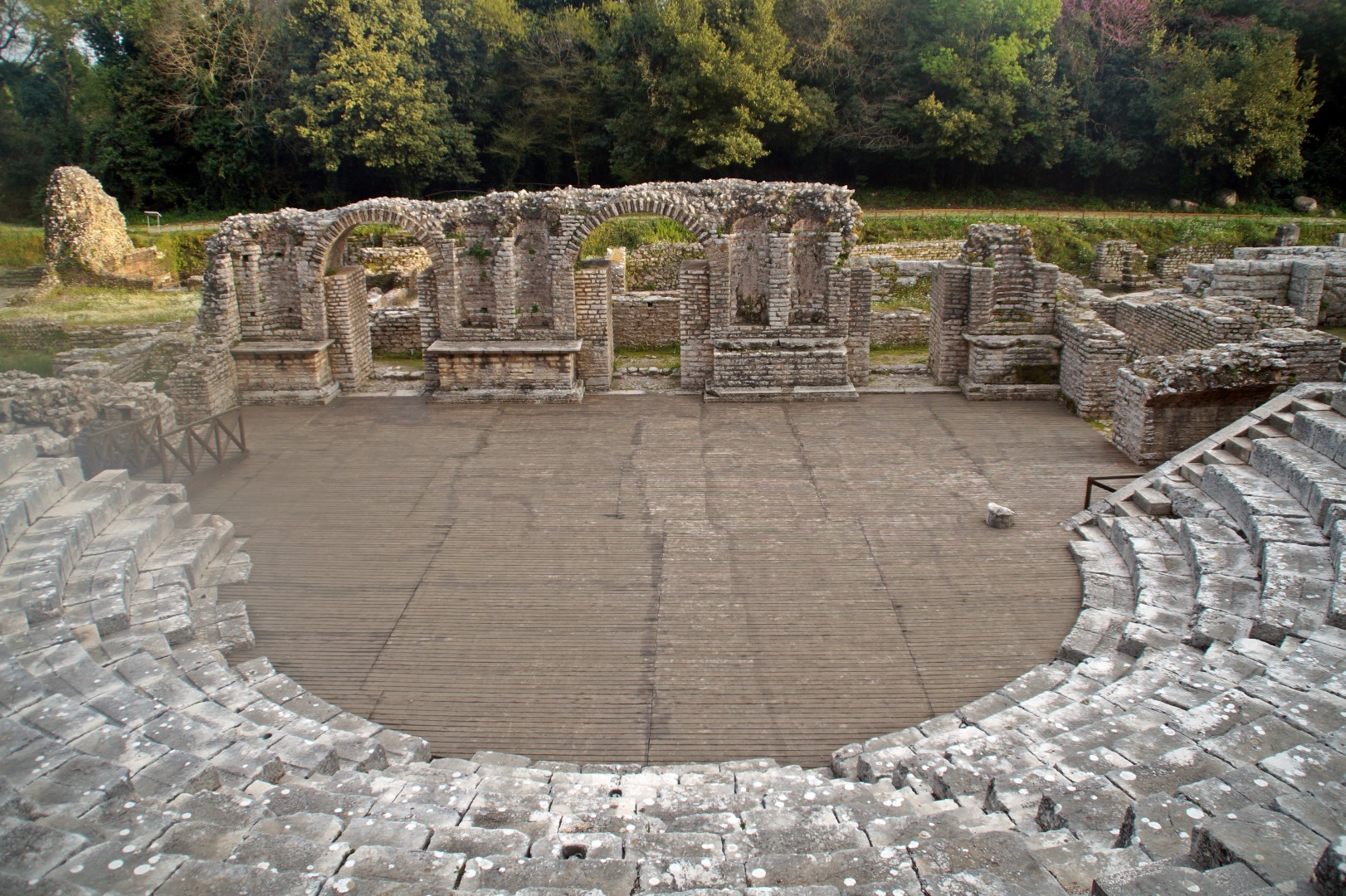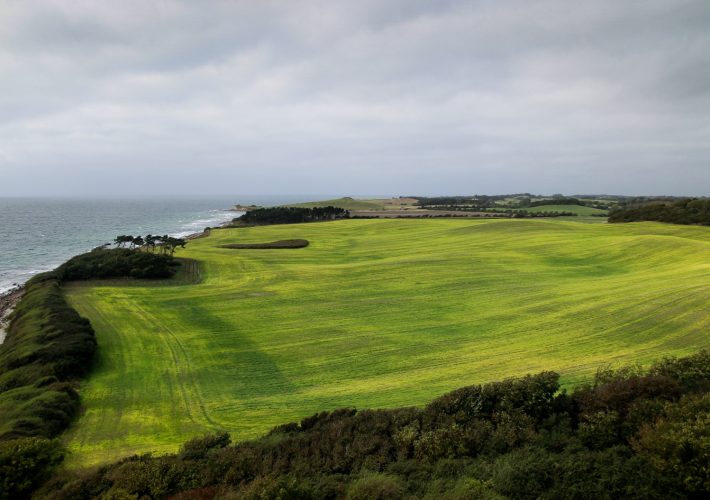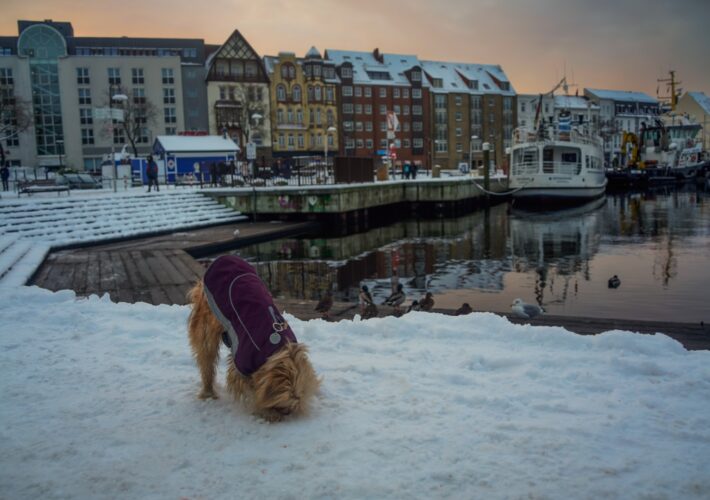Driving through Jutland to Thy, I came by several beautiful spots that I wanted to explore further with my parents. In Vilsund, located at the bridge over the Limfjord between Mors and Thy, I spotted some beach cliffs that seemed like they would offer a nice walk. But when those cliffs turned out to be rather difficult to get to, we decided to drive to the island of Mors instead to explore Hanklit, the largest diatomite cliff in the world at 61 meters high.
Hanklit consists of changing layers of volcanic ash, seen as dark stripes in the lighter moclay. The cliff is a protected site, and is also admitted to UNESCO's tentative list together with Knude Klint, another diatomite cliff on the island of Fur.



Moclay is an extremely rare sediment, which is found only at a few locations in the western Limfjord region in Jutland. The dark stripes of volcanic ash reveal the geological history of the cliffs, which dates back more than 55 millions years, to the Lower Eocene. The moclay and ash layers were moved during the latter part of the Weichsel Ice Age (ca. 23000-9600 BC), creating the dramatic landscapes that we see today.



We walked along the beach below the cliff trying to find fossils, which the area is well known for. We found a few, although I'm not sure what any of them were (I'm an archaeologist - not a geologist, unfortunately!). Then my mum and I decided to climb Hanklit to see the view from above which was incredible, and although steep it was easy and fast! We could see much of Mors and Thy with the town of Thisted, where we spent the rest of the afternoon.





Once again, Denmark showed me that it's a country worth exploring, also beyond Copenhagen. I hope that the other parts of Denmark will start to see more tourism, as there are so many undiscovered gems just waiting to be explored by adventurous souls!



Leave a Comment